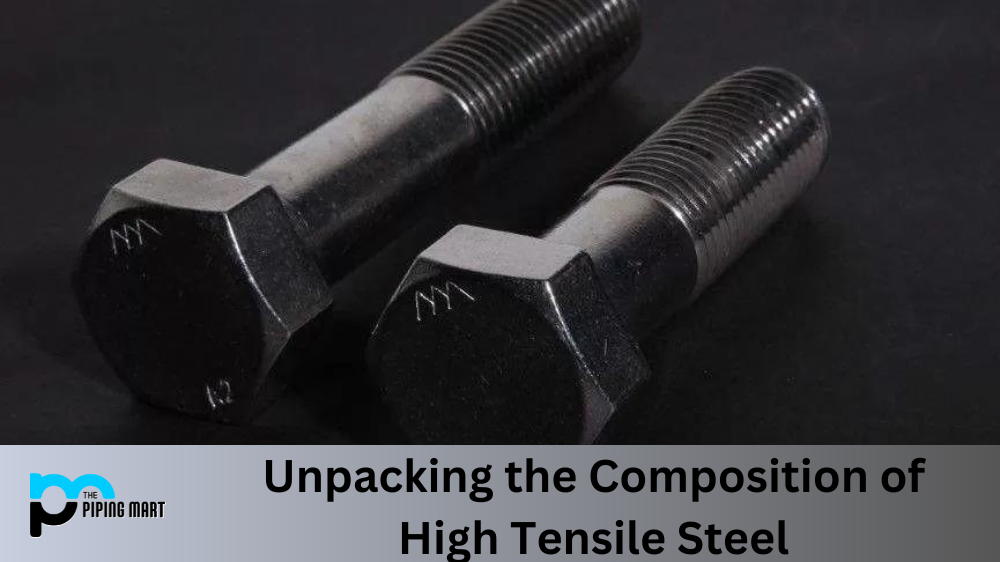High tensile steel is an incredibly strong and resilient metal alloy. It’s used in various industries, from aerospace and automotive engineering to oil and gas production. In order to better understand why this metal alloy has so many uses, let’s take a closer look at its composition and properties.
High Tensile Steel Composition
High tensile steel is a strong and durable metal alloy composed primarily of chromium, molybdenum, silicon, manganese, nickel and vanadium. This special combination gives the steel remarkable tensile strength at temperatures ranging from below zero to almost 2000 degrees Fahrenheit. It is widely used in a variety of applications such as aerospace engineering, automotive manufacturing and industrial machinery, where its superior strength provides superior performance in all kinds of weather conditions. High tensile steel can also resist corrosion and other elements often found in very hot or very cold environments. All these factors make high tensile steel ideal for projects that demand extreme durability.
High Tensile Steel Properties
High tensile steel is an alloy made up of iron, carbon, chromium, vanadium, molybdenum, manganese and silicon. Its high strength-to-weight ratio makes it an ideal choice for applications where weight is a concern, such as in the aerospace industry. High tensile steel also has excellent wear resistance due to its high hardness levels. For example, it can be used for components that require abrasion resistance or are exposed to extreme temperatures.
- High tensile steel is an alloy that contains a high percentage of carbon.
- The high carbon content makes the steel very strong and hard.
- High tensile steel is often used in applications where strength and hardness are required, such as in construction or manufacturing.
- The high carbon content of the steel can also make it difficult to weld or work with.
- High tensile steel is available in a variety of grades, each with different properties and applications
High Tensile Steel Yield Strength
High tensile steel’s yield strength is determined by its chemical composition and heat treatment process. It typically has a yield strength between 600 MPa and 1300 MPa (megapascals). This makes it much stronger than standard carbon steels, which usually have yield strengths between 250 MPa and 500 MPa. The higher the yield strength of high tensile steel, the greater its ability to withstand load or stress without permanent deformation or failure.
Characteristics of High Tensile Steel
The characteristics of high tensile steel vary depending on how it was treated during manufacturing. Generally speaking, though, it has good ductility when cold worked, allowing for easier bending or forming into desired shapes while maintaining its structural integrity. Additionally, this type of steel is corrosion resistant due to its chromium content which helps protect against rusting or other forms of degradation over time. Finally, high tensile steel has good weldability making it ideal for use in fabrication projects where welding may be necessary for assembly purposes.
Conclusion
High tensile steel is a highly versatile metal alloy with numerous applications across various industries due to its impressive properties and composition. Its combination of high strength-to-weight ratio, as well as excellent wear resistance, make it suitable for components requiring abrasion resistance or those exposed to extreme temperatures, while its good ductility when cold worked allows for easy shaping without compromising structural integrity. Additionally, its corrosion resistance ensures that parts remain protected against rusting even in harsh environments while still being easily weldable if necessary for assembly purposes. Ultimately these qualities make high tensile steel one of the most reliable materials available today with countless uses across many different fields, including aerospace engineering, automotive production and oil & gas extraction processes to name a few!

Pipingmart is B2B portal specializes in industrial, metal and piping products. Also, share latest information and news related to products, materials and different types grades to help business dealing in this industry.




